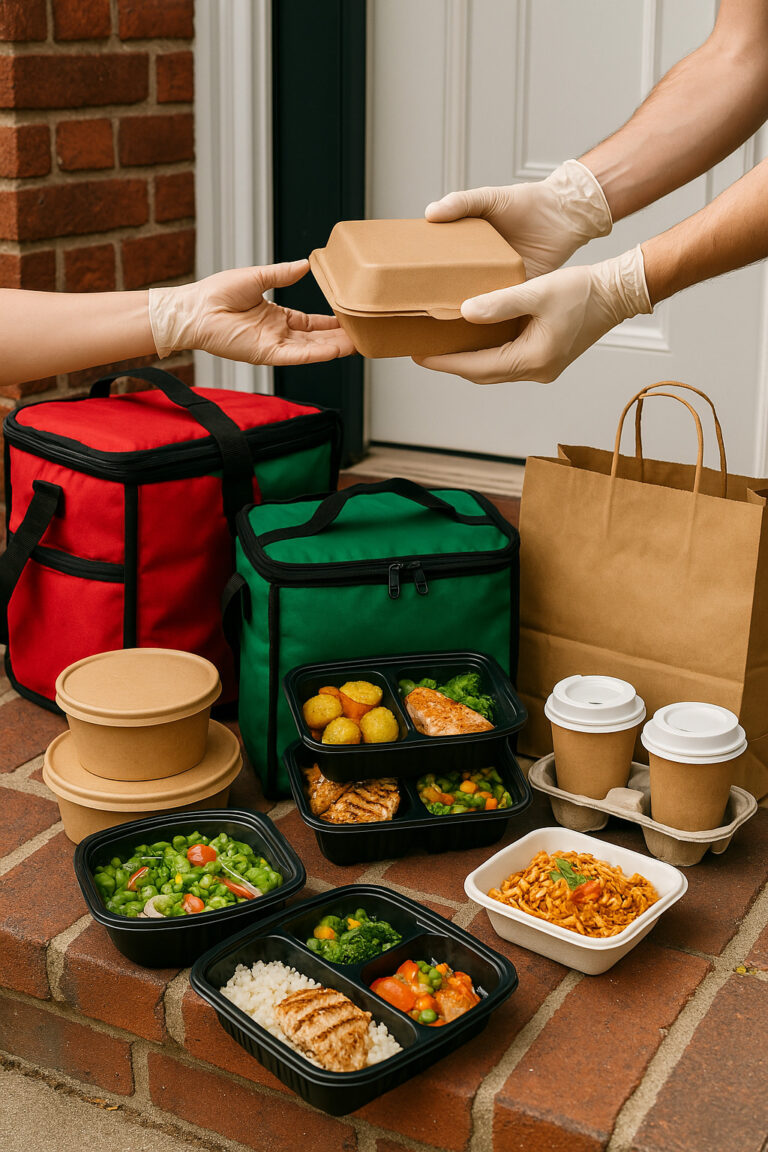In this fast-paced world, time is often a scarce resource, making it a challenge to find the time to plan, shop for, and cook the daily meals. That’s where meal delivery services enter the picture — providing a convenient, flexible and often healthier alternative to the home dining experience. Over the past 10 years, a meal service has gone from basic takeout to everything from gourmet meal kits to entrees delivered to your door and ready to heat.
But never has meal service been so accessible and well-packaged as it is today — hence below is a deep dive on all things meal service, to you: what are your options when it comes to a meal delivery service, and how are they redefining our relationship to food?
What is a Meal Service?
Meal service, otherwise known as a meal delivery service, is a system developed for delivering prepared (or semi-prepared) foods to customers. These services aim to make home cooking easier and lessen trips to the grocery store, and provide a convenient way to plan out the healthiest meals.
Meal services usually fall into three categories:
-
Services like Meal Kit Services — These deliver pre-portioned ingredients and step-by-step recipes to prepare meals from scratch, providing an opportunity to avoid the time of meal planning and grocery shopping.
-
Prepared Meal Services – These are fully cooked meals that require only reheating, true “heat and eat” convenience.
-
On-Demand Delivery – For example, restaurant or third-party delivery platforms that deliver hot food directly from local restaurants.
Gourmet Delivery Services: The Rise of 3rd Party Deliveries
While meal delivery services have their roots in traditional takeout and catering, the landscape changed dramatically in the early 2010s with the arrival of subscription-based meal kits. Companies such as Blue Apron, HelloFresh and Sunbasket popularized the delivery of ingredients for home-cooked meals, and the industry never turned back.
Over the years, these services have evolved to offer full meal plans that are vegan, gluten-free, keto and even paleo — reflecting a growing interest in personalized nutrition. The COVID-19 pandemic also boosted growth, as people looked to contactless delivery services to stay safe and remain connected.
Advantages of Using a Meal Service
Convenience and Time-Saving
The main selling point for meal delivery services is convenience. Finding time to cook every night can be hard with busy schedules and long work hours. Meal services take grocery shopping out of the equation and dramatically cut down on prep time.
Use of portion control or waste management
Because meal kits include pre-measured ingredients, they can reduce food waste and encourage better portion control. This is beneficial for individuals attempting to maintain a certain weight or adhere to targeted dietary objectives.
Healthier Eating Habits
Most meal delivery services are geared toward healthy, balanced meals designed by nutritionists. The meals include lean proteins, whole grains and vegetables — prompting users to eat healthier without the hassle of making a plan.
Culinary Exploration
A great meal service introduces users to new cuisines and cooking techniques. These dishes, whether it’s a Thai curry or a Mediterranean grain bowl, often ease you out of your comfort food zone and into new territory, expanding your palate and teaching you how to cook something you might not have dared before.
In 2025- Top Meal Delivery Services
With hundreds of options available today, several meal delivery services have become household names thanks to quality, affordability and variety.
-
HelloFresh – Offers family-friendly recipes and flexible plans.
-
Blue Apron – Features gourmet recipes and wine pairings.
-
Freshly – Focuses on fully cooked health food.
-
Factor — Specializes in high-protein, keto, and low-carb meals.
-
Home Chef – Offers customization of ingredient and portion sizes.
Each brand has found its niche, offering consumers options that are really driven by their dietary enterprise, budget and lifestyle.
Where to Buy the Best Meal Service
Here are the factors to look for when picking a meal subscription service:
-
Dietary Needs: If you’re vegetarian, gluten-free, or on a high-protein diet, ensure that the service fulfills your nutritional objectives.
-
Prep Time: If you like to cook with meal kits or would rather just have ready-to-eat meals.
-
Budget: Prices can range widely, so find a service that works for your financial comfort zone.
-
Variety: Seek out weekly rotating menus and cuisines diverse.
Reading reviews and sampling a few weeks can help you find your ideal fit.
Are Meal Delivery Services Good or Bad for the Environment?
Meal delivery transformation is inherently strengthening your supply chain. One the one hand, services reduce food waste because they portion more accurately. On the flip side, they add to packaging waste. Fortunately, many companies have recognized this need and are taking steps to use recyclable or compostable materials and ask customers to return packing for reuse.”
Additionally, by buying locally and in bulk, some services cut down on the carbon footprint generally involved in food distribution.
The Future of Meal Services
Meal delivery services are expected to adapt even more with the continually changing technology and consumer habits. Technology is being used to customize nutrition plans according to personalized health data and preferences. Subscription flexibility is on the rise, and many services let customers pause, skip or swap meals with relative ease.
Partnerships with fitness apps, health insurers and wellness programs are also on the rise, embedding meal services in a wider lifestyle ecosystem.
Hopefully, we will also continue to see more regional and culturally specific options as consumers increasingly demand authenticity and diversity in meal offerings.
Conclusion
Despite their humble origins as simple pantry replenishment, meal services have grown to be crucial aspects of modern life over the last year. Targeting areas like health, sustainability, and personalized nutrition, the meal delivery services of today are not just a time-saver — they’re a smarter way to eat.
To begin with, the best meal-service options possess a unique flexibility — whether you’re a busy working adult, a health-conscious foodie, or someone who simply craves the warmth of home-cooked meals without the hustle of grocery runs. In addition, with the industry ever evolving and innovating, the future of food delivery is not only more convenient but also undeniably more exciting — and, quite frankly, more delicious than ever before.


